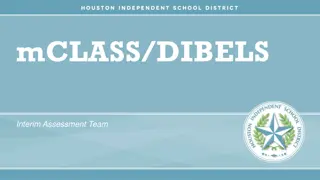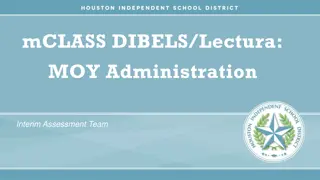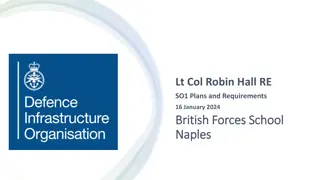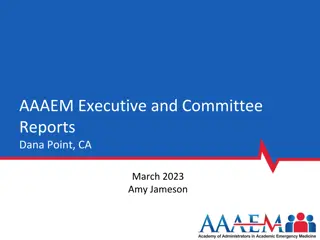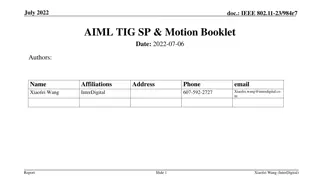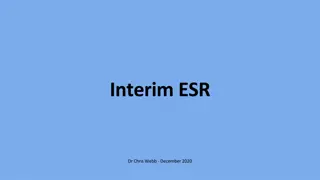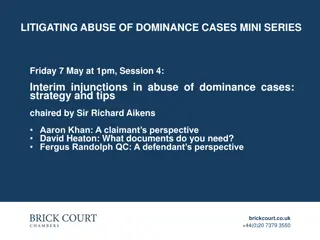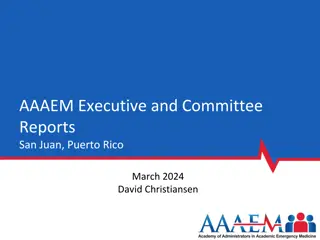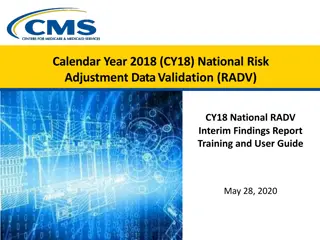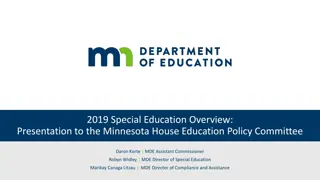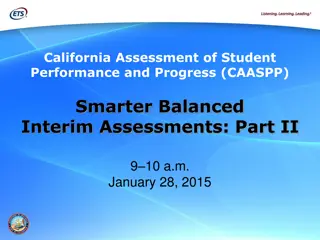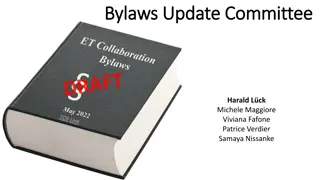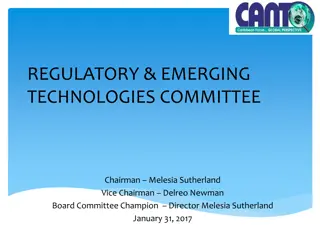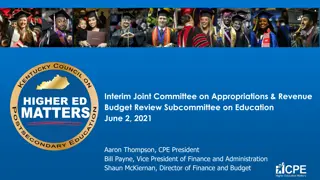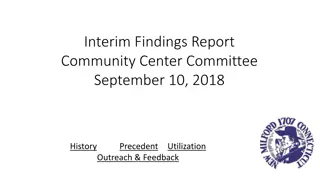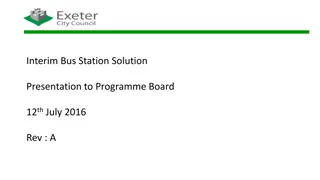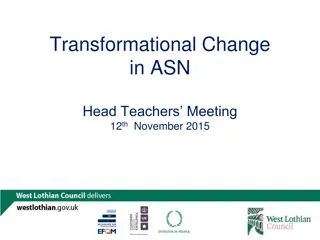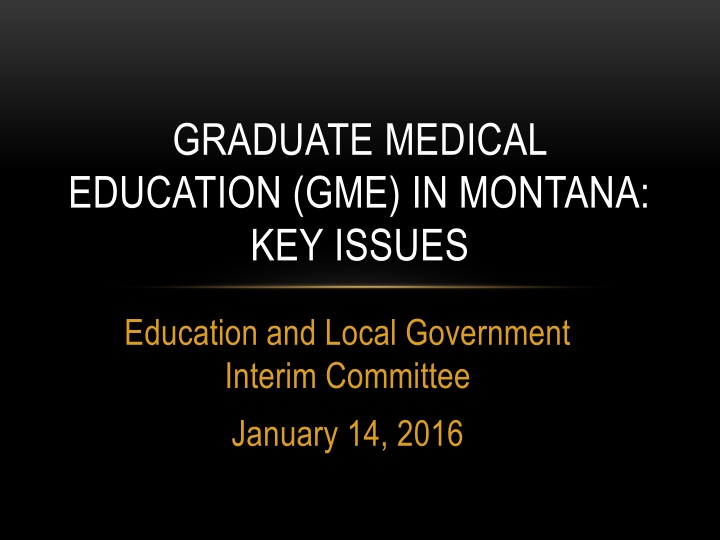
Graduate Medical Education in Montana: Key Issues and GME History
Explore the landscape of Graduate Medical Education (GME) in Montana, addressing topics such as the medical education pipeline, the components of FM residency training, reasons for limited residencies in MT, and Montana's position in GME compared to other states. Delve into the history of GME programs in Montana, highlighting significant developments and challenges faced in establishing and sustaining medical residency programs in the state.
Download Presentation

Please find below an Image/Link to download the presentation.
The content on the website is provided AS IS for your information and personal use only. It may not be sold, licensed, or shared on other websites without obtaining consent from the author. If you encounter any issues during the download, it is possible that the publisher has removed the file from their server.
You are allowed to download the files provided on this website for personal or commercial use, subject to the condition that they are used lawfully. All files are the property of their respective owners.
The content on the website is provided AS IS for your information and personal use only. It may not be sold, licensed, or shared on other websites without obtaining consent from the author.
E N D
Presentation Transcript
GRADUATE MEDICAL EDUCATION (GME) IN MONTANA: KEY ISSUES Education and Local Government Interim Committee January 14, 2016
THE MEDICAL EDUCATION PIPELINE Practicing physician Residency (GME) 3-5 years Medical School (UME) 4 years College 4 years K-12
WHAT IS GRADUATE MEDICAL EDUCATION ? The education that occurs after 4 years of medical school MD or DO Residency Specialty specific e.g. Family Medicine or Internal Medicine 3-5 years Required for board certification
WHAT DOES FM RESIDENCY TRAINING CONSIST OF? Continuity clinic Individual patient panels Clinical rotations in multiple specialty areas 12 to 13 blocks of 28-30 days per resident per year Approximately 750 per year for Montana s current 72 residents Similar for 3rdand 4thyear medical students Conferences Multiple per week
WHY DONT WE HAVE MORE RESIDENCIES IN MT? Development costs Physician leadership Program directors and faculty Limited resources Practicing physician teachers in our communities Accreditation obstacles and complexities
MONTANAS GME HISTORY Montana Family Medicine Residency Billings First class matriculated 1995 24 residents / 8 per class Family Medicine Residency of Western Montana Missoula and Kalispell First class matriculated 2013 30 residents / 10 per class Billings Clinic Internal Medicine Residency Billings First class matriculated 2014 18 residents / 6 per class (expanding to 8 w private funding)
HOW DOES MONTANA STACK UP IN GME? High New York: 79 Massachusetts: 76 Pennsylvania: 56 Low Wyoming: 7 Alaska: 5 Idaho: 4 Montana: 2 (increasing to approximately 7 in 2016)
WHY IS THIS IMPORTANT? Family Medicine February 2015 55% of FM graduates in U.S practice within 100 miles of their residency Reached 70% in a handful of states (including MT!) Thus, addressing the primary care shortage, particularly in underserved areas, will require an increase in the number of residency positions in those locations.
2010-2012 WWAMI EXPERIENCE ~100 specialize in family medicine ~600 Medical students enrolled 8 join a MT residency 6 practice in MT
MONTANA FM RESIDENCY RECRUITING SUCCESS MFMR Residents: 105 MT Med Students: 35 WWAMI Grads: 21 Non-Montanans: 70 TOTAL = 70/105 69% Retention Rate
THE INITIAL FMRWM EXPERIENCE At least 5 and perhaps 7 of the 2016 graduating class will remain in Montana 4 in rural communities 1 in the CHC in Helena
WHAT INCREASES THE LIKELIHOOD OF A RESIDENT PRACTICING IN THE RURAL AND UNDERSERVED PARTS OF MONTANA? More exposure to rural medical communities Clear understanding of the uniquecultures of rural communities Good quality and comprehensive training Opportunities for loan repayment / forgiveness Simply placing a larger number of physicians in MT will not solve the rural / underserved workforce issues.
HOW ARE MT RESIDENCIES FUNDED? Montana state funding Federal GME funding through sponsoring hospitals Sponsoring hospitals cover budget deficits MT residenc y programs
WHERE DOES THE STATE FUNDING RESIDE? Within the MUS budget Connected to DPHHS (state Medicaid contract) Allows 3:1 federal matching dollars to increase the total state funding from $519,336 to approximately $1.5M per year
HISTORY OF HOSPITAL AND STATE FUNDING OF GME APPROXIMATE AMOUNTS Billings Clinic and St Vincent Healthcare 1996-2015 $4,500,000 Providence St. Patrick Community Medical Center 2013-2015 $ 720,000 Kalispell Regional Medical Center State Funding of GME $319,000-$519,000 annually
THE ECONOMIC IMPACT OF INVESTMENT IN GME Family Medicine Residency Return on Investment* Annual economic impact of one new FM physician Cost to educate one FM physician At a retention rate of 70% $1,958,600 $ 928,500 ROI in year 1 and every year thereafter 2.11 x * Source: Family Medicine Residency Return on Investment Study by Larry White
THE ECONOMIC RETURN TO MONTANAS ECONOMY OF MFMR GRADUATES 1998-2015 MFMR Graduates in Montana: 70 physicians Total years of medical practice: 537 physician-yrs $1.98 million economic impact/physician/yr $1,063,260,000
WHAT WOULD ADDITIONAL MT GME FUNDING ACCOMPLISH? Additional state funding would help to increase training in rural areas and increase the number of graduating physicians who practice there.
A MONTANA PSYCHIATRY TRAINING TRACK University of Washington psychiatry residency regional training tracks a successful model for Montana. Years 1 and 2 in Seattle, WA Years 3 and 4 at a regional site (Boise, ID or Spokane, WA) Boise, ID from 2007 to Present: 63% of graduating psychiatrists remained in Idaho. Spokane, WA from 1992 to 2014: 83% of graduating psychiatrists remained in Washington during last 5 years of the program. Converted to a fully independent, 4-year psychiatry residency.
SUMMARY: KEY POINTS Graduate Medical Education (GME) or residency is the specialty training that occurs after medical school. Physicians are considerably more likely to practice in the vicinity of their residency than their medical school. The creation of residency slots is a key mechanism to increase the number of primary care physicians in MT. Residents are more likely to practice in rural and underserved areas if they train in them. Increased state funding would enhance the ability of the current residencies to provide rural training.
QUESTIONS? Thanks for listening


